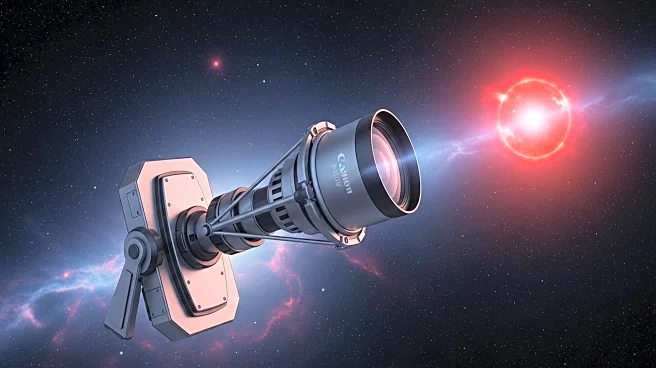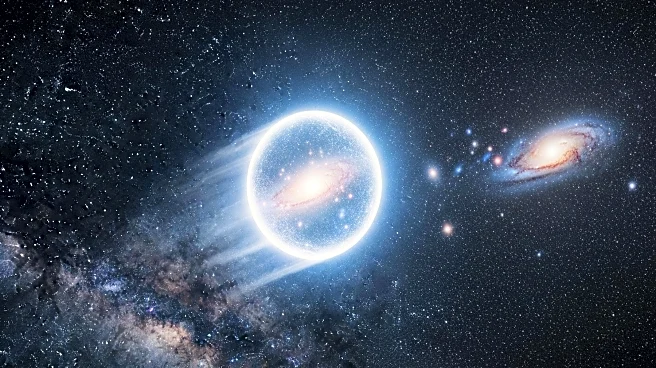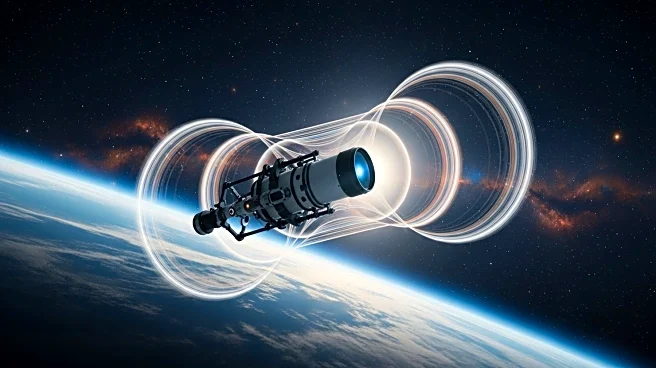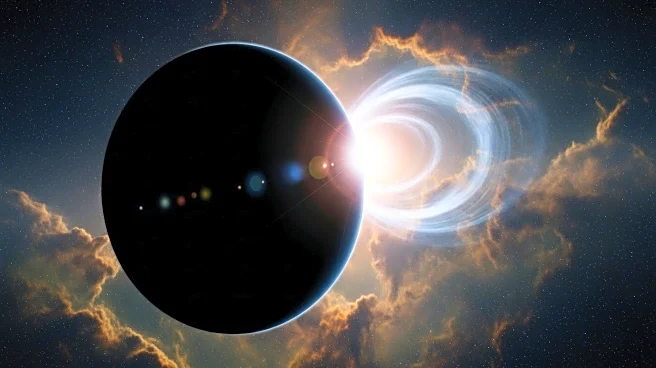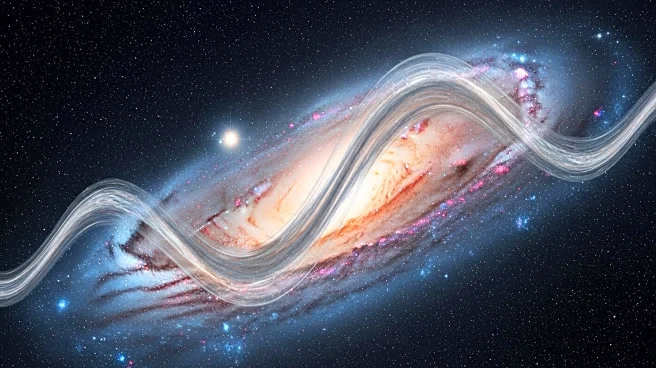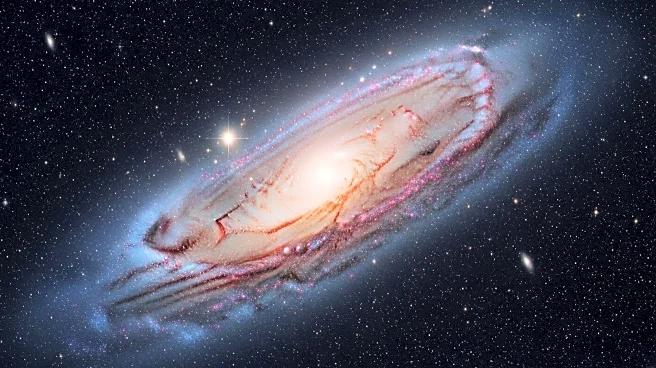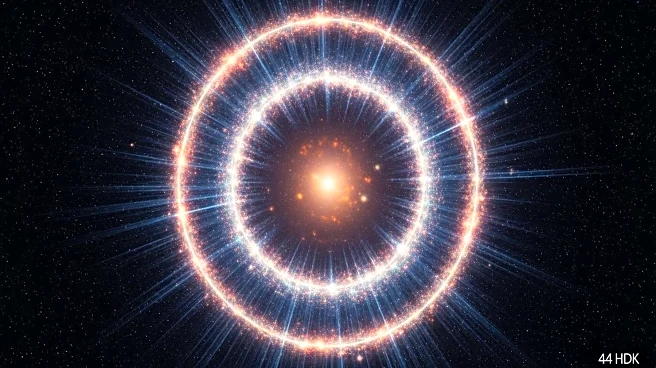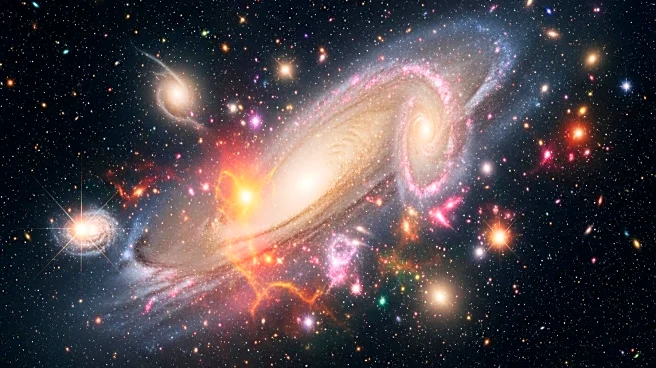What's Happening?
Astronomers using the James Webb Space Telescope (JWST) and the Atacama Large Millimeter/submillimeter Array (ALMA) have discovered a massive 'galactic contrail' in the spiral galaxy NGC 3627, located approximately 31 million light-years away in the constellation Leo. This contrail, a trail of gas and dust, is believed to have been created by a massive black hole passing through the galaxy. The contrail is about 20,000 light-years long and 650 light-years wide, making it the most clearly defined contrail ever discovered. The discovery was made during the Physics at High Angular Resolution of Nearby Galaxies (PHANGS) survey, which aims to study the influence of gas and star formation on galaxy structure and evolution.
Why It's Important?
The identification of such a contrail provides significant insights into the dynamics of galaxies and the role of massive compact objects like black holes in shaping them. Understanding these phenomena can help astronomers learn more about the evolution of galaxies and the distribution of dark matter. The discovery also highlights the capabilities of advanced telescopes like JWST and ALMA in uncovering cosmic events that were previously difficult to observe. This could lead to further studies on the population of massive dark objects and their impact on galactic structures.
What's Next?
Researchers plan to continue studying the contrail and search for more such streams in the PHANGS observations. Future deep optical surveys or high-resolution ALMA observations might reveal more about the compact object responsible for the contrail, whether it is a massive black hole or the dense nucleus of a dwarf galaxy. This ongoing research could provide more definitive answers about the nature of these cosmic phenomena and their implications for galaxy formation and evolution.
Beyond the Headlines
The discovery of the contrail raises questions about the presence and behavior of massive dark objects within galaxies. It challenges existing models of galaxy dynamics and could lead to new theories about the interaction between black holes and galactic matter. The study also underscores the importance of international collaboration in astronomy, as researchers from different countries contribute to these groundbreaking discoveries.

